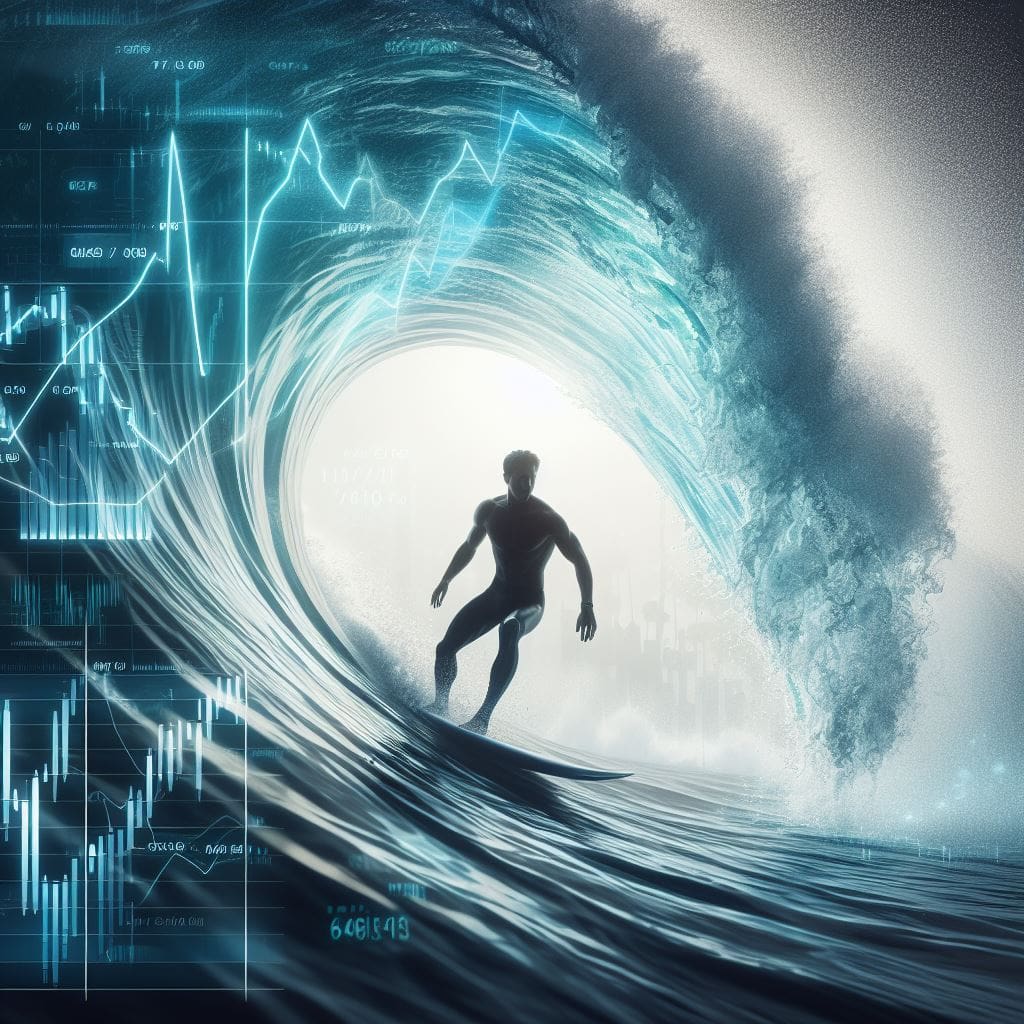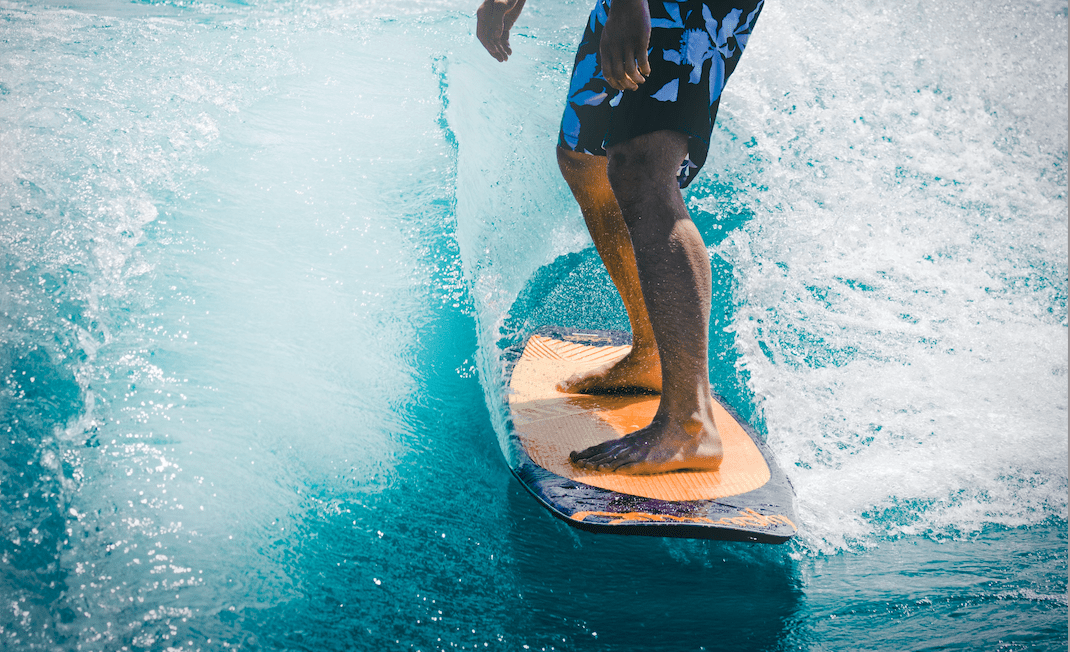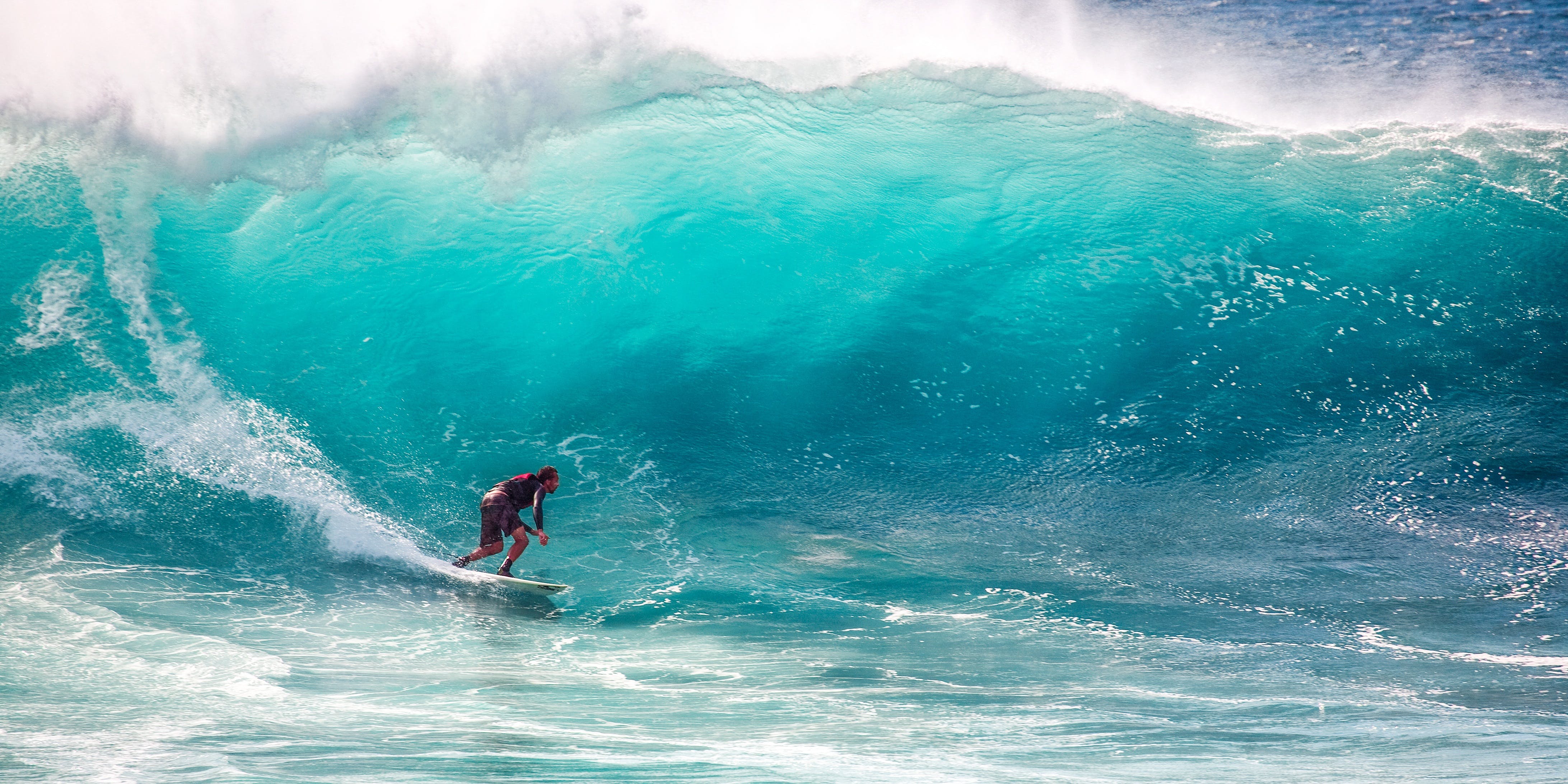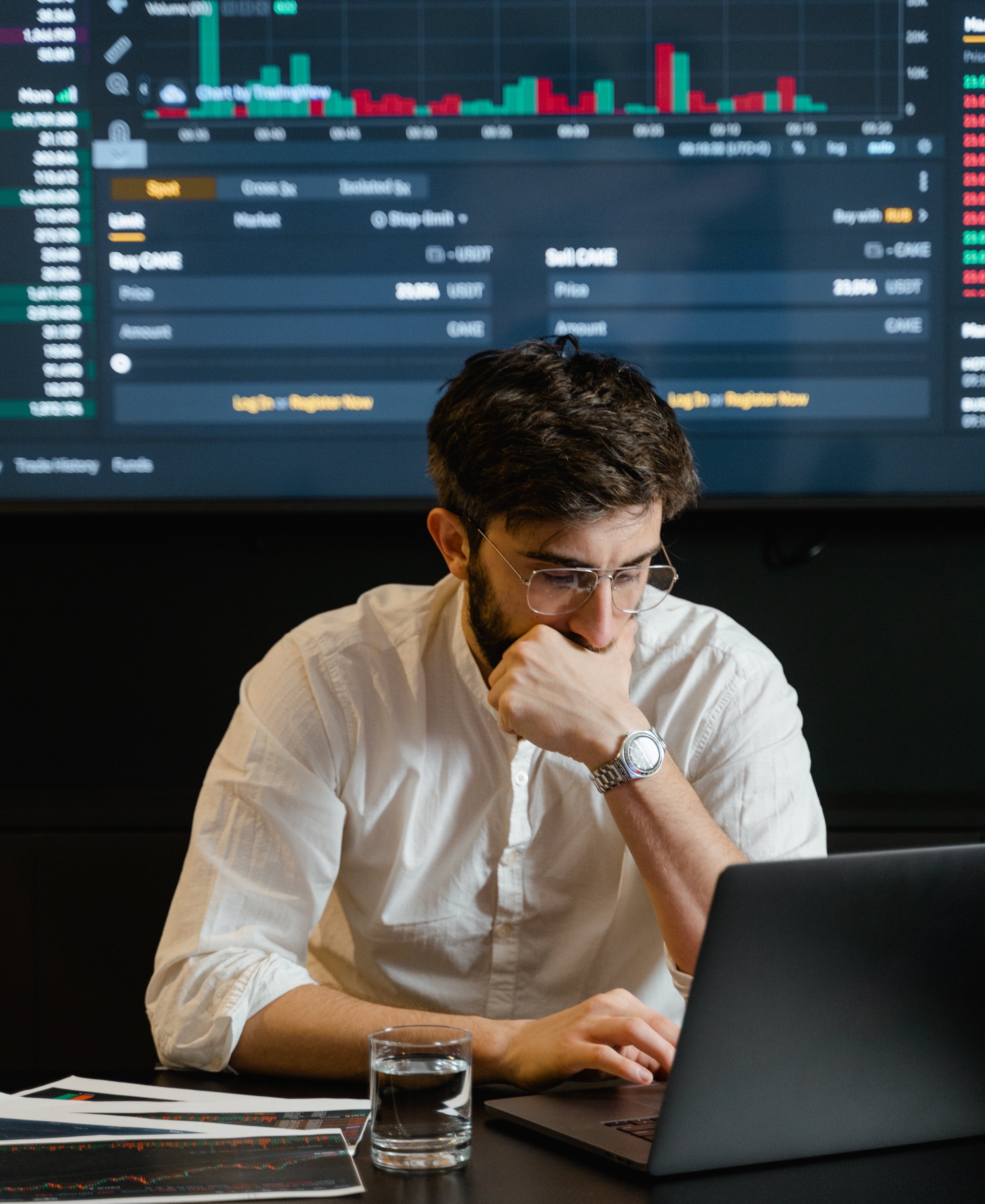Surfing and Stock Trading: Riding the Waves of Success
Surfing and Stock Trading: Riding the Waves of Success
By Katie Gomez
As always, my blogs strive to demystify trading and investing, making them more accessible to newcomers, especially the younger and less experienced individuals in the financial world. To maintain motivation, it’s crucial to simplify the learning process and make it relatable. Being from sunny San Diego, where I frequently observe surfers in action, provides valuable insights into drawing effective parallels between two seemingly distinct activities: surfing and stock trading.

Stock trading and surfing might seem like completely unrelated activities, but they actually share core similarities and some intriguing parallels. I have always been fascinated by the concept of the flow state, and both surfing and stock trading are prime examples of how to enter this state. In this article, I will delve deeper into the obvious and not-so-obvious similarities between these two activities, including the concept of the ‘flow state’ and how it applies to both. Stock trading and surfing have both been around for quite some time and, for the most part, still stay true to their origins.
We have all heard the expression “in the zone,” a feeling that allows humans to forget about the constraints of time and enter a hyperfocused state where everything just flows. As a yoga instructor, I first discovered this flow state during my practice, and it seamlessly extended to my teaching, making an hour feel like mere minutes. When I began stock trading, I was thrilled to find that this feeling also exists for traders. Not everyone can enjoy surfing, and not everyone can enjoy trading, but those who persevere will often discover an irresistible intoxication in the flow state that is difficult to quit.
Surfing and trading both possess a unique rhythm. Surfers navigate the ebb and flow of waves, while traders ride the market’s ebb and flow. The more time spent immersed in these activities, the stronger the pull to return. The flow state fosters remarkable growth in various endeavors, whether it’s learning, teaching, practicing yoga, making music, or catching waves.
Many traders, especially day traders, can confirm that it’s easy to become entranced. As your eyes remain fixed on the screen, the hours between market open and close swiftly pass, only interrupted when something reminds you it’s time for a break. Achieving a state akin to catching the perfect wave is comparable to making the ideal trade. So, how can one access this sought-after flow state?
Balance and Timing

Whether it’s surfing or trading, it all begins with timing. Both activities demand a sense of equilibrium and timing. Balancing on a surfboard while catching the perfect wave requires precision timing, just like selecting the opportune moment in stock trading. This equilibrium and timing can also be seen in the world of stock trading. Traders must carefully choose which opportunities to pursue and become adept at playing the waiting game. Achieving balance as a stock trader involves diversifying your investments across various assets and timing your trades to ride the market like a wave – seizing the perfect moment to ride it, rather than being overwhelmed by it.
Risk management is a crucial aspect of both trading and surfing. While financial risk is well-known to traders, surfers face physical risks such as strong currents, rocks, and sharks. In trading, the level of risk can create similar feelings of intensity, depending on the invested amount. Traders must remain vigilant due to the unpredictable nature of the stock market. For traders, risk management includes diversification and setting stop loss orders. Surfers, on the other hand, manage risk by monitoring weather and swell reports for safety. Despite the differences, both activities share a core similarity in risk management: the importance of waiting and vigilance.
Riding the momentum

The striking parallel between trading and surfing, beyond the flow state, is their shared concept of momentum. In both pursuits, riders aim to harness and ride the momentum efficiently. Whether it’s a surfer catching a wave or a trader seeking profit, the objective is to time their actions perfectly, staying on the wave or trade’s momentum for as long as feasible and safe. It all boils down to timing; being too early or too late means missing out on the natural momentum. Just as surfers dismount when the momentum wanes, traders should exit a trade before the momentum dwindles, securing the best selling price.
Furthermore, a crucial element is enjoyment and passion. Any hobby, sport, or career requires a degree of joy and passion to sustain motivation and ignite the fire that gets you out of bed. For some, both surfing and trading provide that source of giddiness, creativity, connection, and joy that fuels their passion. They are pursued out of a genuine love and respect for the activities. Surfers find thrill in catching waves and discover beauty in the ocean, much like traders find motivation in witnessing a trade’s success and appreciate the intricate, unpredictable, exciting, and complex world of the stock market and the ocean.
Reading the waves vs. reading the market

Both surfing and trading demand patience and keen observation. Surfers must interpret the ocean, discern wave patterns, and position themselves for optimal rides. Similarly, traders must decipher market dynamics, recognize trends, and analyze data to make well-informed decisions, aligning with their specific timing and objectives.
Adaptability and flexibility are key in both surfing and trading. The stock market, like the weather, can be just as unpredictable and chaotic. Surfing requires rapid adjustments to ever-changing conditions, from waves to weather. Trading emphasizes the importance of adaptability; traders must constantly recalibrate their strategies based on the market’s actual behavior, which often deviates from predictions. Economic events and news can swiftly influence the stock market, demanding traders’ flexibility in response to evolving conditions. Just as weather predictions can be unreliable, so can market forecasts – there’s no guaranteed way to predict either accurately.
Practice
Both stock trading and surfing share a common need for practice and hands-on experience. Theoretical knowledge alone won’t suffice; it’s the hours you put in that truly make a difference. Catching waves or executing trades requires real-world practice. In both cases, you’ll stumble, possibly even fail, but each attempt takes you closer to mastery. Similarly, traders benefit from using simulators or paper trading to gain valuable experience and minimize future mistakes. Mastery in either field hinges on dedicated practice, skill development, and continuous learning. Surfers refine their foundation through time in the water, while traders sharpen their strategies through observation, research, and simulator practice.
Patience and persistence

Surfers and traders share the need for resilience and patience. Surfers may wait in the scorching sun for the perfect wave, only to find themselves trapped underwater in a barrel. Similarly, traders can spend an entire day glued to screens, waiting for the right market conditions, only to face financial setbacks. Both must endure discomfort for eventual rewards. Learning only takes you so far; taking action and facing the risk, whether swallowing seawater or losing money, separates those who make headlines.
Additionally, emotional control is a shared trait. Surfers and traders both practice regulating their emotions to remain calm and focused, particularly when facing challenging conditions like changing weather or market volatility. They rely on rationality to navigate unexpected situations and prevent heightened emotions like panic from taking over.
Enjoyment and passion:
Like any pursuit in life, maintaining motivation requires a level of enjoyment and passion to keep that inner fire burning. For many individuals, both surfing and trading serve as outlets for excitement, creativity, connectedness, and joy that ignite their passion, pushing them to show up and persist. They are driven by genuine love, respect, and enthusiasm for these activities. Surfers revel in the thrill of catching a wave and find beauty in the ocean, just as traders are motivated by the exhilaration of watching a trade succeed, recognizing the beauty in immersing themselves in the unpredictability, excitement, and complexity of the stock market and the ocean.
In conclusion, it’s evident that surfing and trading share more common ground than one might initially think. While distinctions can be made between them, the undeniable overlap is clear. There’s something about these chaotic, flow-state-inducing, occasionally frustrating yet ultimately rewarding activities that keeps surfers and traders coming back. Even when they face setbacks, their love for what they do remains unwavering.
